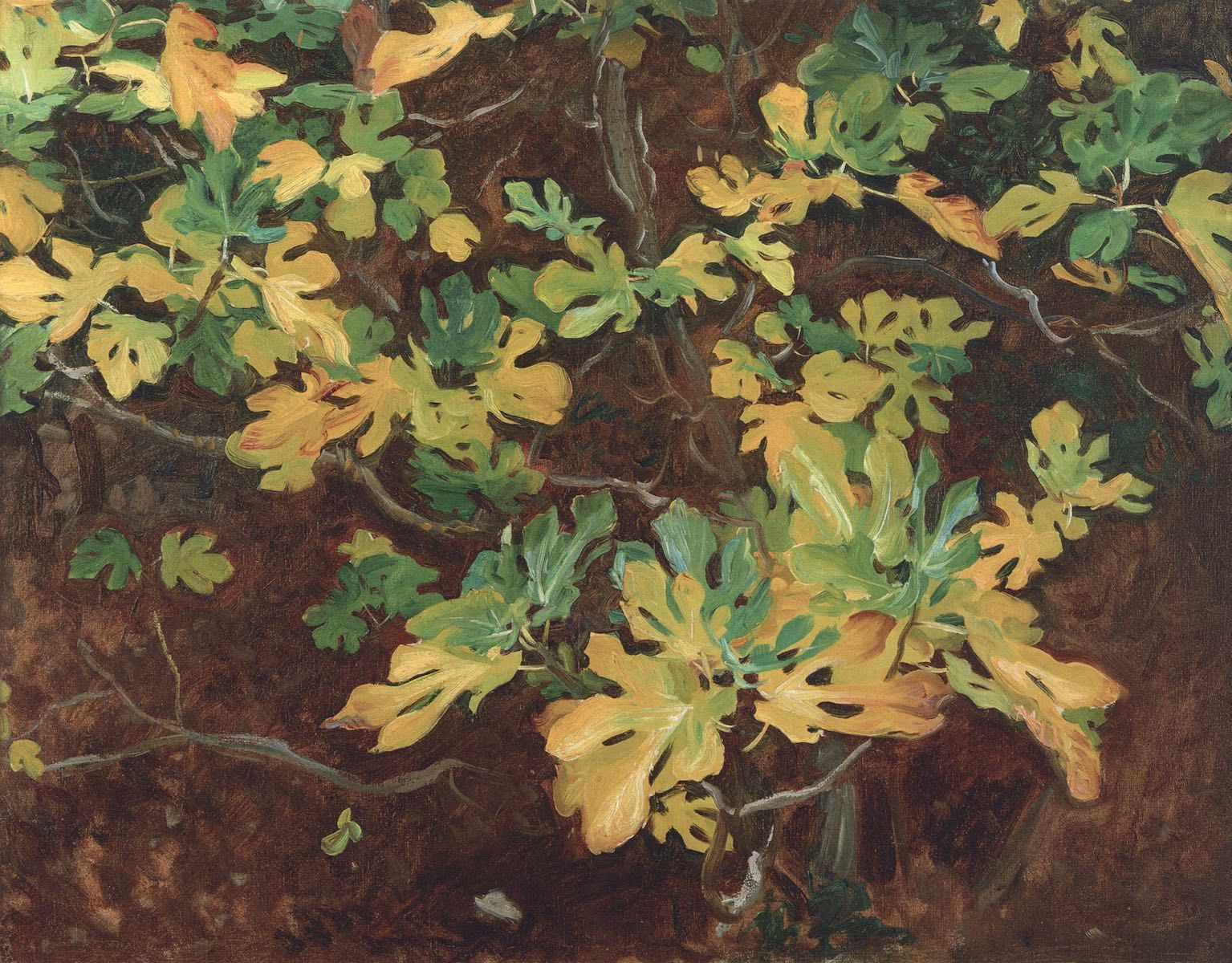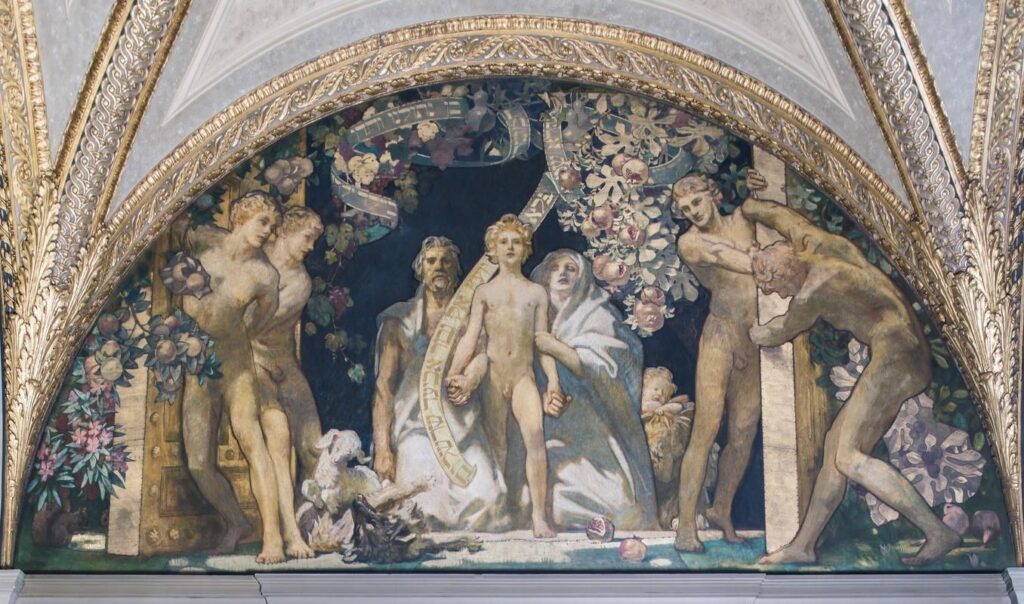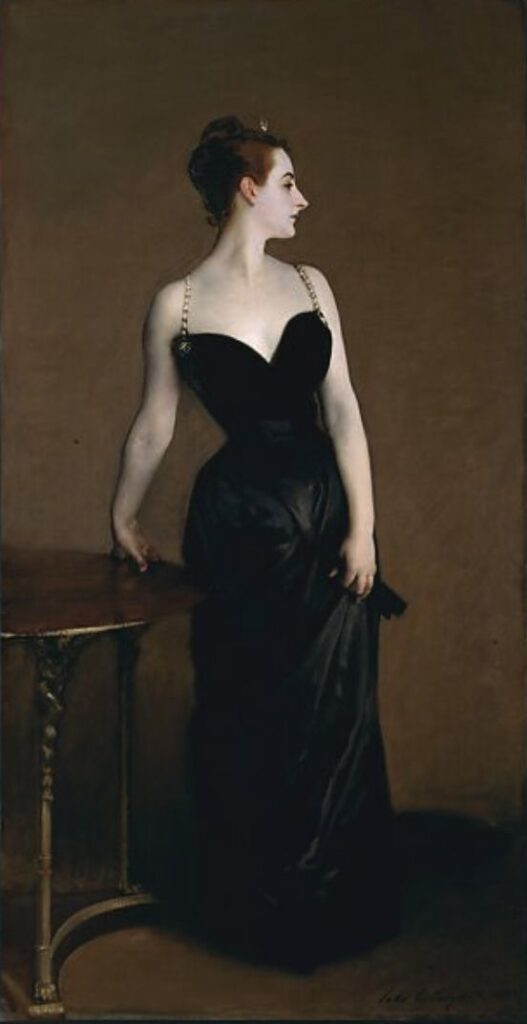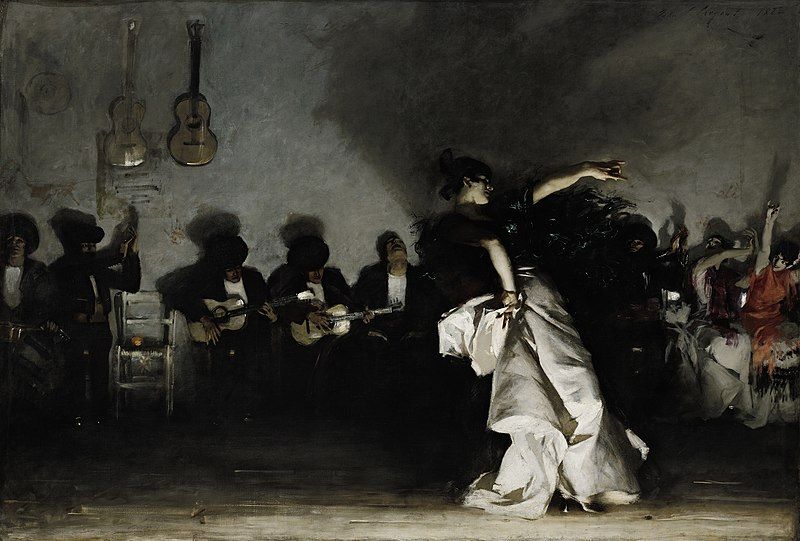
John Singer Sargent (1856–1925)
Study of a fig tree, 1908
Oil on canvas
McMullen Museum of Art, Boston College, Carolyn A. and Peter S. Lynch Collection, 2022.18

Oliver Wunsch
Assistant Professor, Art History

Painted in Majorca in 1908, this study is no simple botanical illustration. Green and yellow fig leaves undulate across the brown background, forming an almost abstract arabesque. Sargent had become increasingly interested in decorative abstraction while in Spain, where he admired the ornamental tilework present in Jewish and Islamic architecture.1
Sargent ultimately incorporated elements of this painting into a mural celebrating the emergence of Christianity, The Messianic Era (see image), which constituted part of his larger Triumph of Religion cycle in the Boston Public Library. He was planning The Messianic Era while in Spain in 1908, and he took advantage of the trip to capture Mediterranean foliage for his Boston mural.2 In the final work, a cluster of fig leaves appears interlaced with pomegranate plants in the background, floating to the right of the blond and fair messiah. While Sargent was careful to examine authentic Mediterranean flora for the mural, he nonetheless adhered to period assumptions in deciding that Christ needed to have the features of a Northern European.3
1. Sarah Cash, Sargent and Spain (New Haven: Yale University Press, 2022), 107–11.
2. Richard Ormond and Elaine Kilmurray, John Singer Sargent: Complete Paintings, vol. 8 (New Haven: Yale University Press, 2014), 73; Sally M. Promey, Painting Religion in Public: John Singer Sargent’s “Triumph of Religion” at the Boston Public Library (Princeton: Princeton University Press, 2001), 343n95.
3. Sally M. Promey, “Sargent’s Truncated Triumph: Art and Religion at the Boston Public Library, 1890–1925,” Art Bulletin 79, no. 2 (1997): 217–50, 244.

Gregory Fried
Professor, Philosophy

Compared to large-scale portraits like Madame X that secured Sargent’s fame and success (see image), this painting of leaves on a fig tree in Majorca, Spain, in 1908, is a mere study. It appears free and uninhibited by any need to please a client. With a squint of the eyes, the composition seems a deliberately abstract study of color and shape, while at the same time, the impasto of the brushwork so richly evokes the leaves, like icing generously heaped with a knife onto a cake. Sargent therefore bridges the abstract and the utterly specific in this work, perhaps a metaphor for how he felt about Spain—that he wanted to gobble up the country’s forms, colors, sounds, and movements, as in his extraordinary El Jaleo (see image), a depiction of a Romani Spanish dancer ecstatically performing a flamenco dance to guitars, signing, and rapturous applause. But, in the fig leaves, he treats us to the very smells and tastes of a fig orchard, which we share with him.


